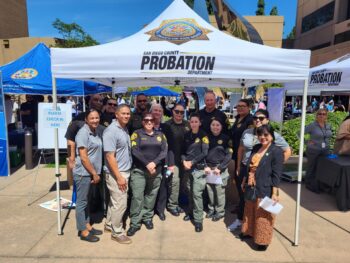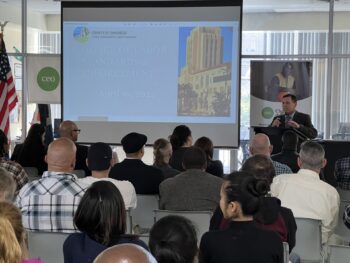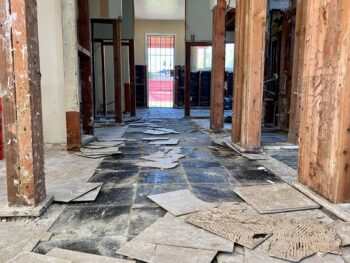The County continues to bolster its ability to protect itself from wildfires, and a report outlining dozens of steps taken was presented to the Board of Supervisors Tuesday.
The Wildfire Resiliency Program report provides an assessment of regional fire preparedness, response, and recovery capabilities to further reduce community risk to wildfires. It comes at a critical time for fire awareness, as San Diego is entering peak fire danger season and fire officials say we’re at high risk through December.
“The chance for extreme fire behavior is expected to increase in the coming months as we enter the Santa Ana season,” County Fire Authority and CAL FIRE Chief Tony Mecham told the Board.
Gary Johnston, the County chief resilience officer, says two-thirds of the identified 50 action items identified have already been completed. The rest are expected to be done by next September except for some of the long-range projects including a VHF network initiative and additional ground and aviation fire detection cameras.
Program improvements include additional staffing for a County Fire community outreach division. This division has already developed a new Community Wildfire Protection Plan to provide guidance to local communities on defensible space, reducing dead and dying trees and vegetation, making homes more fire safe and community evacuation.
County Fire/CAL FIRE, the Sheriff’s Department and the County Office of Emergency Services are working together to enhance tactical communication during a wildfire incident by implementing a new digital radio system, additional radio repeaters and further investment in satellite communications.
Other improvements include:
- County Fire now has four Urban Search and Rescue Units to improve the region’s rescue capabilities.
- County Fire also improved its Geographic Information System capabilities with more staffing and the purchase of new software to help capture data.
- The Department of Animal Services developed a new plan for the evacuation, care and repopulation of animals during an emergency. This plan was successfully implemented during the Valley Fire.
- County Public Works helped identify available debris and medical waste disposal sites.
- The County Department of Parks and Recreation is helping the emergency interim housing process faster and more efficient.
- County Health and Human Services also sent its Live Well Mobile Office to the Local Assistance Center to help those affected by the Valley Fire.
Mecham spoke to this progress but also noted that the County and residents need to stay ever vigilant about fire preparedness, adding that 2020 has surpassed all records as the worst fire year in California history.
How County Residents Can Strengthen the Regional Plan
To protect your home during a fire, the single most important thing people can do is to create defensible space around their home; 100 feet is recommended. Any clearance work involving any mower or power equipment can be done only during non-critical fire conditions because it can actually spark a fire in certain situations.
Families need to have an emergency plan and practice it so it’s not unfamiliar in a high-stress situation. Discuss in advance what needs to be packed in which vehicles and have any special items accessible. Make sure pets and medications are on the list.
Residents are reminded that if a they feel unsafe, they do not need to wait for an official warning or order to evacuate.
Visit ReadySanDiego.org to learn about how to prepare before a fire and what to do in a fire situation.
Residents are encouraged to register their cell phones on AlertSanDiego, the County’s emergency notification system and download the SD Emergency App at no cost. An emergency family plan template is available in English, Spanish, Tagalog, Vietnamese, Japanese, Arabic, Mandarin, Cantonese, Farsi, French, Korean, Somali and in an audio version.





